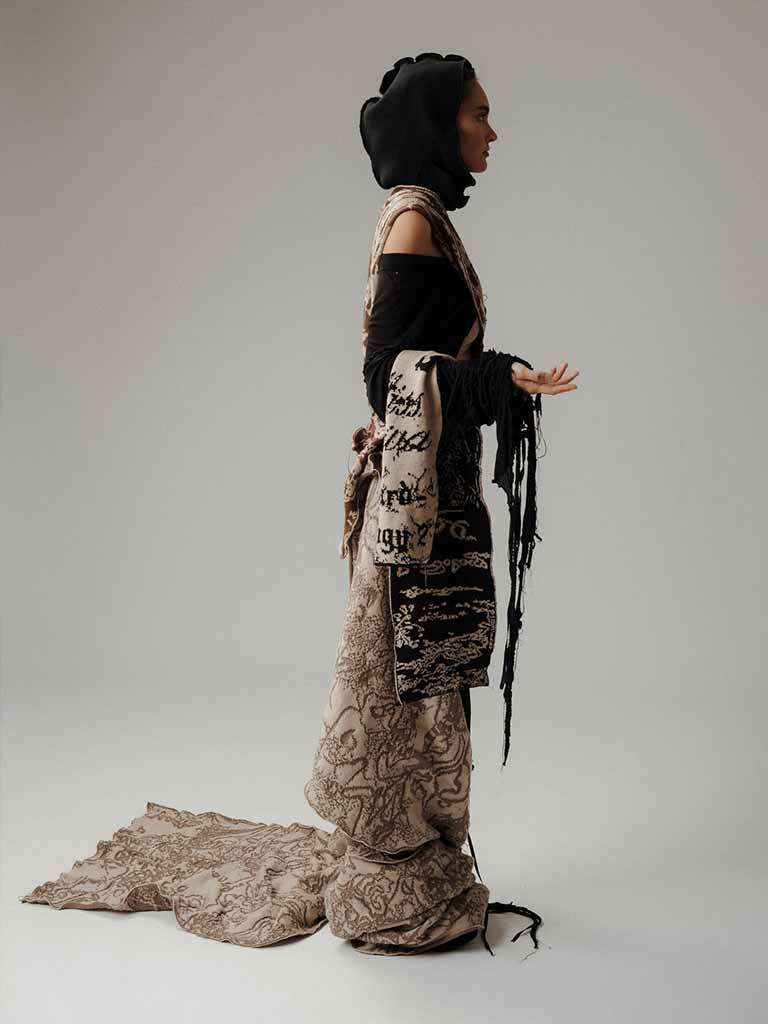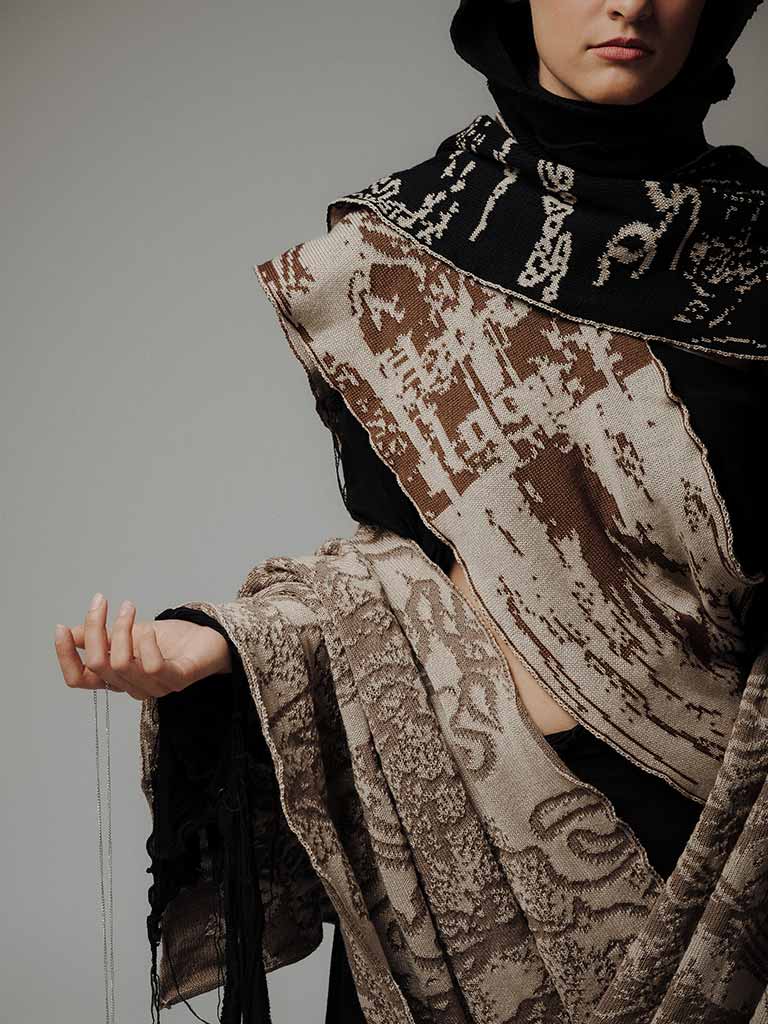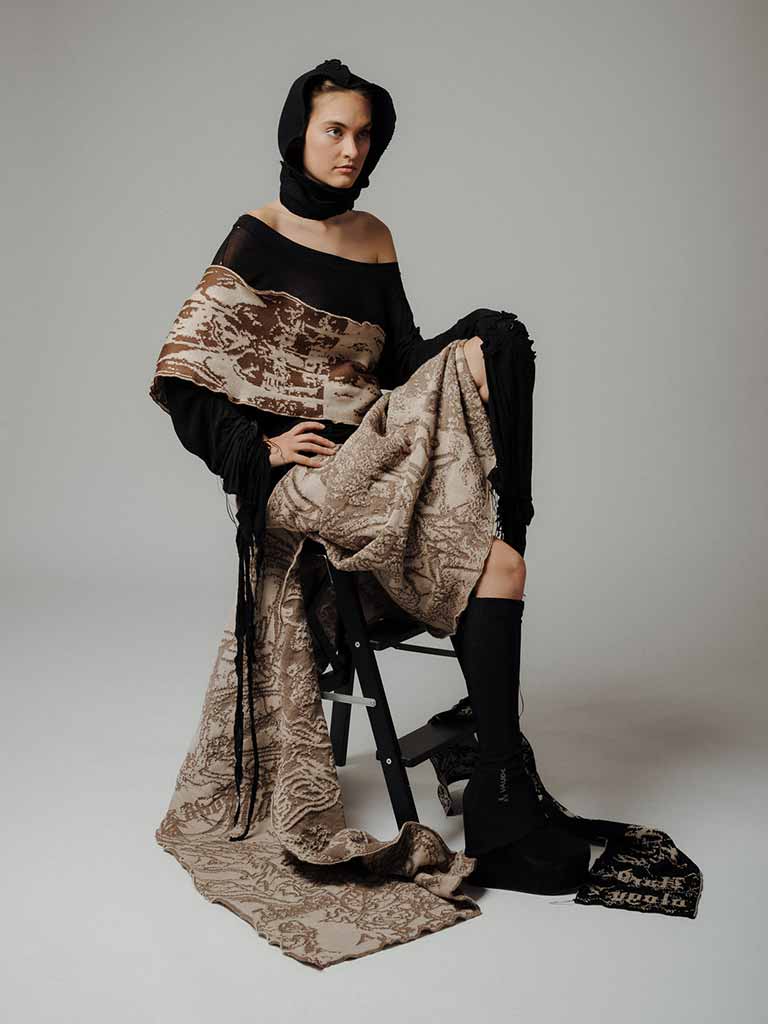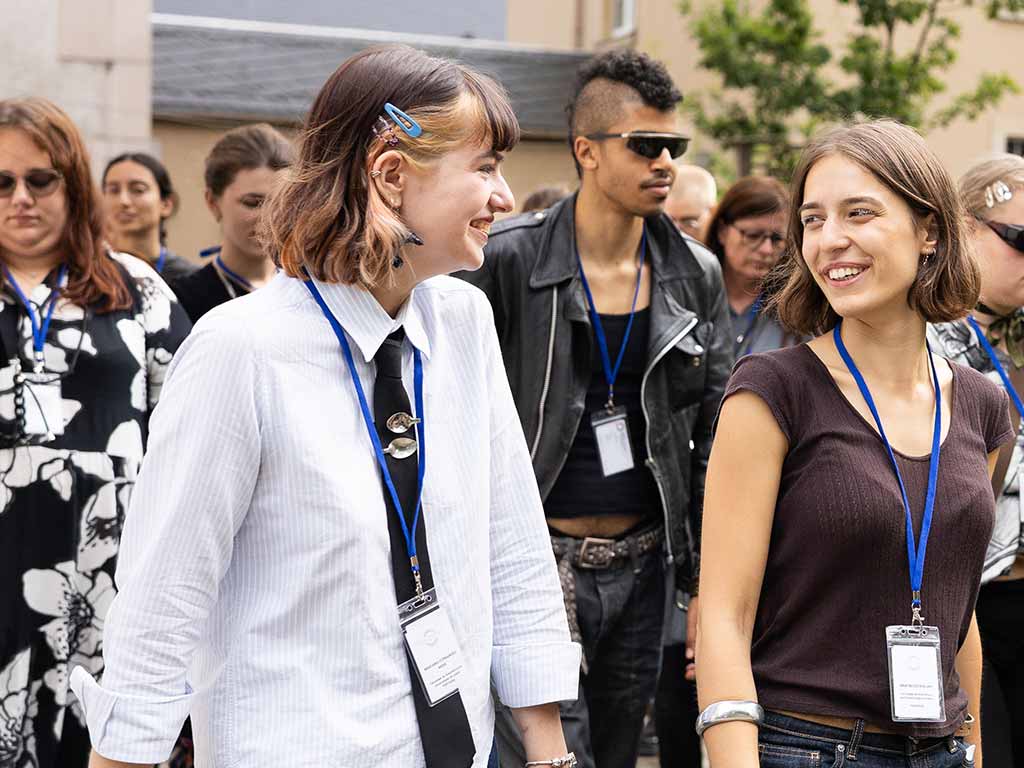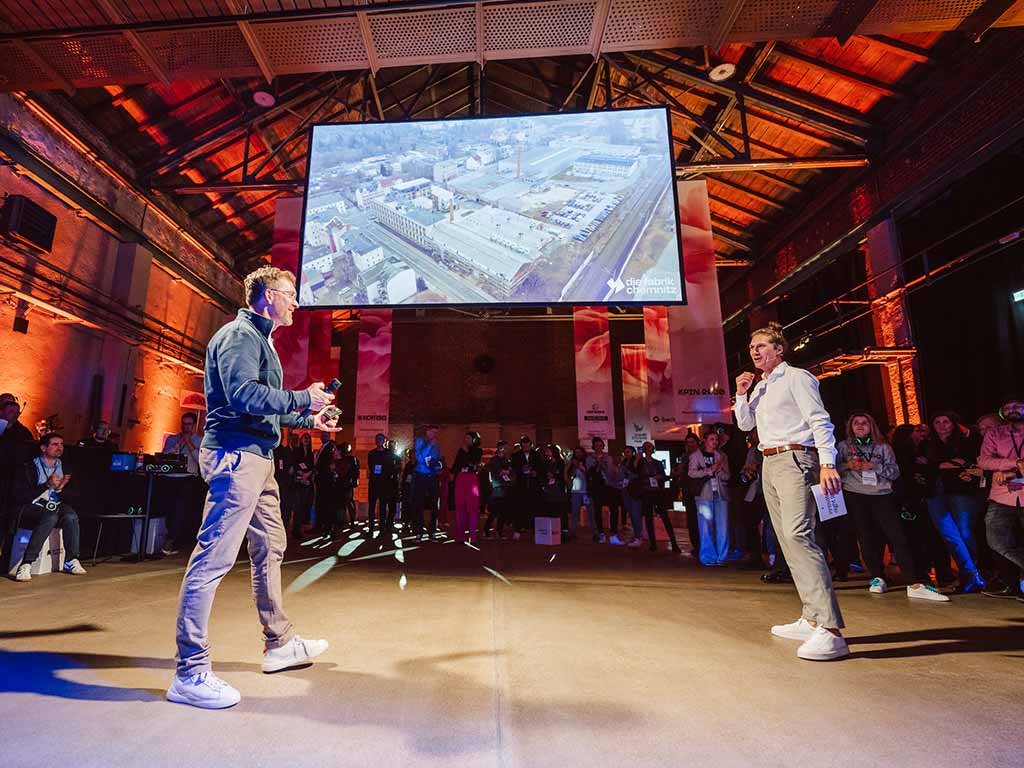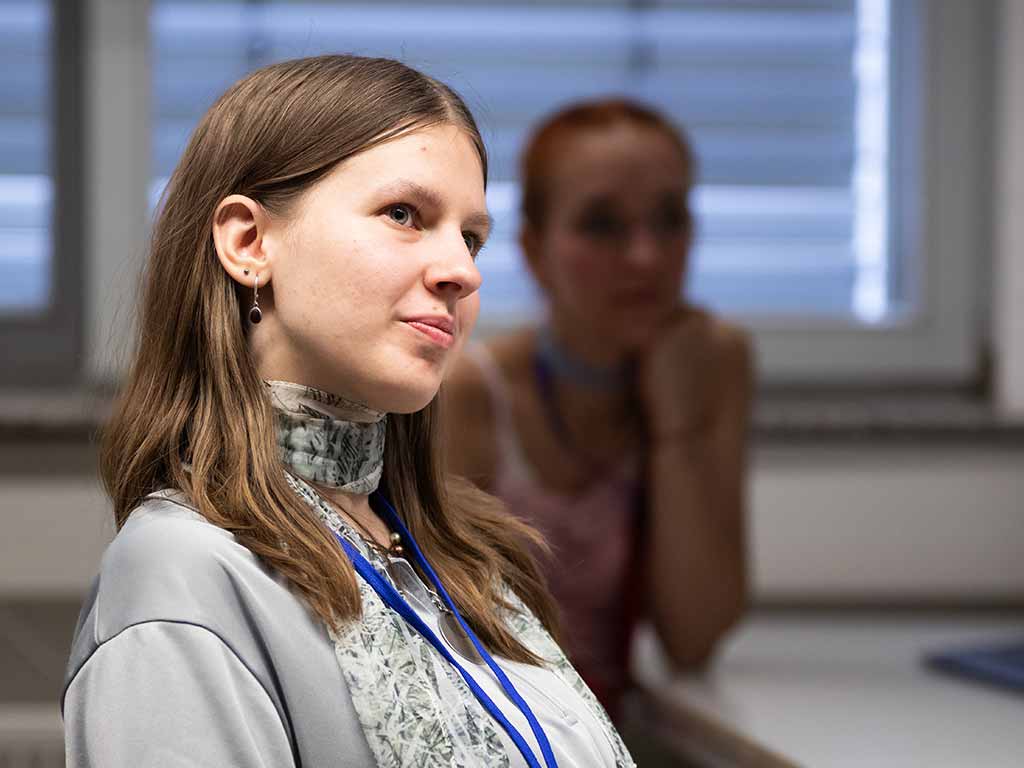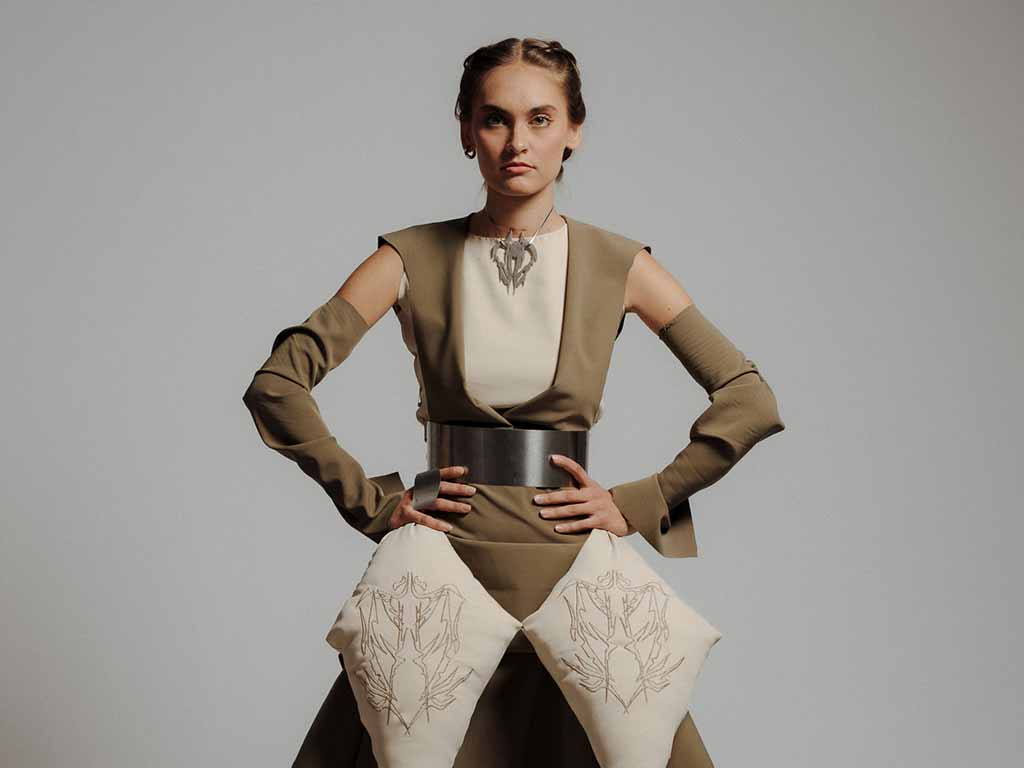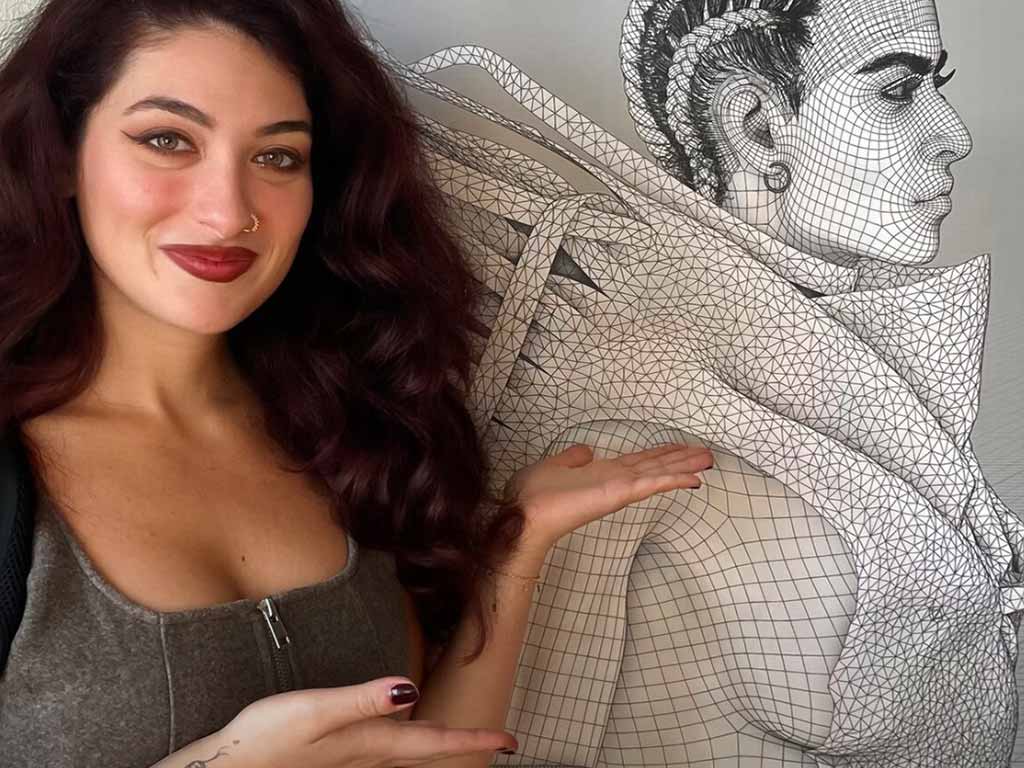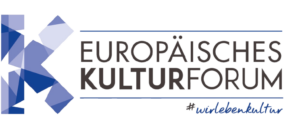
Between Code and Fabric – Artūrs Skurstenis on the Art of Digital Craftsmanship
Sometimes the most exciting ideas arise where opposites collide: tradition and technology, material and algorithm, craftsmanship and vision. For Artūrs Skurstenis, a 27-year-old first-year master’s student at the Art Academy of Latvia, the makerspace was a place where precisely these contrasts merged into a creative whole. Here, among humming machines, glowing screens, and spontaneous conversations about design, he discovered how digital processes and physical materials can mutually enrich each other. For him, the makerspace became a stage where ideas were not just conceived but translated into fabric, form, and movement.
Artūrs, what new skills or insights did you gain in the makerspace – perhaps beyond the purely technical aspects?
Artūrs Skurstenis: I learned how to work effectively in an interdisciplinary environment – that is, how to reconcile creative ideas with technical limitations. Beyond digital skills, I developed a stronger sense of teamwork, quick decision-making, and visual implementation under time pressure. It was fascinating to experience how different ways of thinking and disciplines can lead to completely new results.
Was there a particular moment that was an “aha moment” for you?
Artūrs Skurstenis: One of the most impressive moments was realizing how digital processes and craftsmanship can enrich each other. Seeing virtual ideas suddenly transform into tangible, material experiments made me rethink how technology doesn’t replace creativity, but rather supports it—it can become a tool to further enhance emotion and expression.
Did you make new contacts or connections with other students or universities in the makerspace?
Artūrs Skurstenis: Yes, absolutely. I met several participants who are also interested in experimental textile design and digital innovation. Our discussions about technology, materials, and concepts opened up new perspectives for me. It was inspiring to see how similar interests can be practiced in very different cultural contexts.
What was the biggest personal challenge for you while working in the makerspace—and how did you overcome it?
Artūrs Skurstenis: The biggest challenge was staying focused and calm while dealing with technical issues and time pressure. My computer crashed repeatedly, and this disrupted my workflow. But I learned to stay flexible, reset my priorities, and see every difficulty as an opportunity to find a new solution.
What insight did you gain from working on your avatar or outfit?
Artūrs Skurstenis: Working on my avatar showed me that digital representation goes far beyond mere visualization. A piece of clothing, even if only simulated, can evoke presence, intimacy, and memory. It becomes an extension of the physical body—a new form of expression.
Was there a moment that particularly inspired you?
Artūrs Skurstenis: Yes—working with the Kniterate knitting machine. It was incredible to see digital code transform into real, tangible material. That moment, when a piece of fabric emerges from a file, felt like an idea coming to life. It showed me how innovation and craftsmanship can merge without one displacing the other.
What technical tools have you worked with the most—and what have you learned from them?
Artūrs Skurstenis: I worked primarily with CLO3D, Adobe Substance, and the Kniterate machine. CLO3D helped me precisely design proportions and structures, while Substance allowed me to experiment with textures and materiality. Through Kniterate, I learned how digital concepts can be translated into physical textiles—each piece has its own character.
What result of your work in the makerspace are you most proud of?
Artūrs Skurstenis: I’m particularly proud of the large knitted fabric I created with the Kniterate machine. It later became the basis for the concept of knitted shorts. For me, this work symbolizes the balance between precision and experimentation, between structure and freedom—it’s a physical result that embodies the spirit of my digital process.
How do you personally want to continue after the makerspace?
Artūrs Skurstenis: I want to continue exploring how digital fashion can be combined with tactile textile research. This experience motivated me to delve deeper into material innovations and develop hybrid design methods—methods that combine experimentation and concept.
Are there any ideas or projects you’d like to develop further—perhaps also for the Holo show?
Artūrs Skurstenis: Yes, I’d like to continue exploring knitted structures in digital space—how they can move, deform, or layer. I’m particularly fascinated by how the boundary between digital surfaces and physical textiles can be blurred. It’s about interweaving worlds.
What was your greatest personal gain from your time in the makerspace?
Artūrs Skurstenis: The biggest gain was being able to think more flexibly—to remain open to uncertainty and change. I learned that innovation comes from collaboration, curiosity, and the courage to step outside your comfort zone. The makerspace showed me that true creativity always begins when you take the risk of trying something new.


